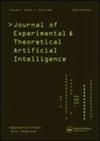Explainable spiking neural network for real time feature classification
IF 1.7
4区 计算机科学
Q3 COMPUTER SCIENCE, ARTIFICIAL INTELLIGENCE
Journal of Experimental & Theoretical Artificial Intelligence
Pub Date : 2021-08-03
DOI:10.1080/0952813X.2021.1957024
引用次数: 1
Abstract
ABSTRACT The work presents a concept of an implementation of an explainable artificial intelligence (XAI) using effective models of third-generation neurons. The article discusses a concept of building a neural network based on spiking neurons modelled on ladder nervous systems. A distinction is made between voltage signals encoding information in a network and current signals which contain the correlation between information in the network and pattern features. Analyzes feature a neuron model based on the cusp catastrophe theory eliminating network sensitivity to problems of synapse plasticity, weight mismatch and coupling of neurons based on electric models. The paper presents applications of a spiking neural network for reporting the state of water quality while generating justifications. The article contains results of an analysis of confusion of justifications with ACC = 1 for a set of 10,000 patterns. It also discusses the speed of pattern analysis in the simulated network.用于实时特征分类的可解释尖峰神经网络
本研究提出了利用第三代神经元的有效模型实现可解释人工智能(XAI)的概念。本文讨论了一种以阶梯神经系统为模型,以尖峰神经元为基础构建神经网络的概念。在编码网络中信息的电压信号和包含网络中信息与模式特征之间的相关性的电流信号之间进行区分。分析了基于尖突变理论的神经元模型的特点,消除了网络对基于电模型的突触可塑性、权错配和神经元耦合等问题的敏感性。本文介绍了一种脉冲神经网络在报告水质状态和生成理由方面的应用。本文包含对一组10,000个模式中ACC = 1的证明混淆的分析结果。讨论了模拟网络中模式分析的速度。
本文章由计算机程序翻译,如有差异,请以英文原文为准。
求助全文
约1分钟内获得全文
求助全文
来源期刊
CiteScore
6.10
自引率
4.50%
发文量
89
审稿时长
>12 weeks
期刊介绍:
Journal of Experimental & Theoretical Artificial Intelligence (JETAI) is a world leading journal dedicated to publishing high quality, rigorously reviewed, original papers in artificial intelligence (AI) research.
The journal features work in all subfields of AI research and accepts both theoretical and applied research. Topics covered include, but are not limited to, the following:
• cognitive science
• games
• learning
• knowledge representation
• memory and neural system modelling
• perception
• problem-solving

 求助内容:
求助内容: 应助结果提醒方式:
应助结果提醒方式:


